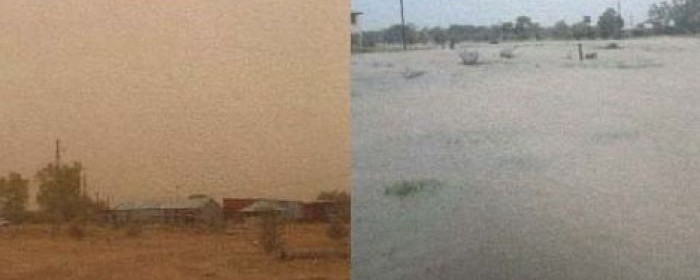Scientists predict swing from drought to flooding rains

Scientists are tipping this year’s forecast El Nino will be closely followed by a reverse La Nina weather system, swinging conditions from drought to flooding rains in some parts of Australia.
There are predictions the coming El Nino, which typically brings hot and dry conditions to the country’s east, could be one of the strongest ever recorded.
CSIRO principal research scientist Wenju Cai said the forecast El Nino was likely to be followed by a La Nina, bringing extreme wet weather in 2016.
“This kind of extreme El Nino event normally lasts until April, May, and then we will see the system switch to conditions that are developing towards a La Nina in, say, next June, July, August,” Dr Cai said.
“El Nino and La Nina both peak at our summer season and that’s why we will have floods in our summer (2016-2017).”
He said floods would be likely in north-eastern Australia, where La Nina rains would arrive in the wet season.
Dr Cai said it was common for La Nina events to follow strong El Nino systems, as seen in Australia when a strong El Nino in 1982 and 1983 lead to an period of extreme dryness, during which the Ash Wednesday bushfires occurred, and was subsequently followed by floods in 1984.
“During El Nino, the ocean loses heat to the atmosphere, so that the sub-surface cooler water is in closer contact with the surface and that is good for cooling in the Central Pacific. That is what La Nina is.”
More frequent extreme weather predicted
Dr Cai and fellow climate scientists have published a paper in the Nature Climate Change journal predicting in the future, under global warming, strong El Nino and La Nina events will happen more often, with strong El Ninos increasing from a one-in-20-year frequency, to one in 10 years.
“What really was not good news for Australia was that for the increase in the La Nina events, most of it will occur in the year after an extreme El Nino event,” Dr Cai said.
“So under climate change, according to climate models, we are going to see this higher frequency of switching from El Nino to La Nina, one extreme to the opposite extreme, from one year to the next.”
Original article appeared on ABC Rural, 20 August 2015 (link)

